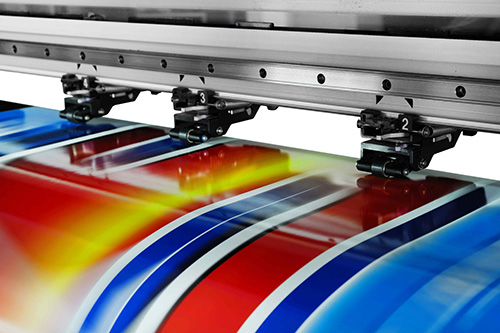There are many inkjet ink systems used in the sign and graphics segment, and they are not chosen randomly. Currently, the primary ink types available are aqueous, solvent, latex, UV-curable and dye-sublimation. Each has its purpose, and each has its “sweet spots” regarding the substrates upon which it can be used. One of the questions I often ask those entering this segment is: “What is it you plan to do?” This question is critical because the end product (or result) desired dictates the technology used. Over the past decade, there has been a proliferation of media products for wide-format. It all started with coated paper, but then vinyl entered the mix, then pressure-sensitive materials, rigid materials and more, all either specifically-coated or prepared to receive print from specific ink types. Add to that exotic add-ons like textured or opalescent laminate films, light blocking liners and other products, and you have many choices which extend the options you have. Each, I would posit, represents an opportunity for someone, but all do not represent an opportunity for anyone. Which ones are right for your company? The same question applies: What is it you plan to do? Again, the end product defines the materials.
Over the past decade, there has been a proliferation of media products for wide-format. It all started with coated paper, but then vinyl entered the mix, then pressure-sensitive materials, rigid materials and more, all either specifically-coated or prepared to receive print from specific ink types. Add to that exotic add-ons like textured or opalescent laminate films, light blocking liners and other products, and you have many choices which extend the options you have. Each, I would posit, represents an opportunity for someone, but all do not represent an opportunity for anyone. Which ones are right for your company? The same question applies: What is it you plan to do? Again, the end product defines the materials.
The same goes for finishing technologies. Laminators, cutting machines, routing machines, sewing, seaming and coating machines are some of the primary tools used in the wide-format sector. Like printing devices and materials, each of these technologies represents specific opportunities, and each should be defined by the end products desired. Learn, understand, then purchase wisely.
I’m not a plumber by trade, but I do know that the difference between myself and a skilled plumber is knowledge of parts, pieces and the process. As you journey into wide-format, packaging or areas of the commercial sector you have not yet experienced, you must develop your knowledge on the subject to define yourself as capable.